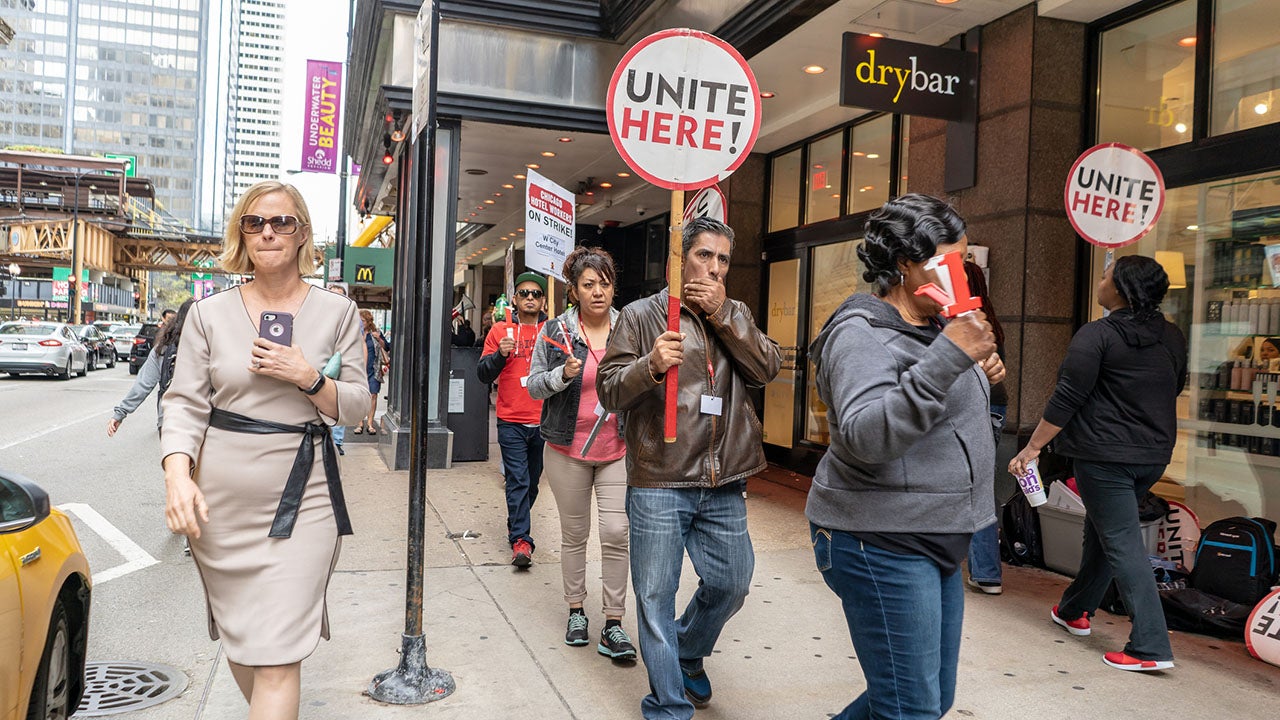The past month has signaled a shift in the role workers play in our economy. The US has seen union wins at Amazon and Starbucks, employee walkouts at Disney in response to their CEO’s reaction to the “Don’t Say Gay” bill, and deafening public pressure on companies to exit Russia in light of the war in Ukraine. While all of these stories have different origins and impacts, there is a strong throughline: the evolution and increasing strength of worker voice within companies and beyond.
While worker voice—the ability of a company’s employee base to have their needs heard by their employer, and ultimately have an impact on business decision making—appears to have strengthened recently, it is not clear that this shift will last. If worker power is rooted in temporary market factors such as low unemployment and the “Great Resignation,” then different market conditions could also weaken worker power.
Still, we are currently seeing a strengthening signal: that employees want more say, especially collectively, than companies typically acknowledge or leverage. According to Edelman’s 2021 Belief-Driven Employee research, 50% of employees surveyed say they can get a company to change anything about itself, and 76% say they will take action to produce or motivate urgently necessary changes within an organization.
Time to Embrace Worker Voice
We are clearly operating with fundamental shifts regarding the employee-employer relationship. It’s time for companies to take a new position on worker voice. There are business reasons to celebrate it. Worker organizers have shown remarkable leadership and commitment to improving their workplaces. Their success could also help companies make good on promises that are essential for maintaining the legitimacy and public support for capitalism.
Workers are often closest to the needs of a company’s customers and are a critical voice in driving product innovation. Distributing power among a greater number of employees within a company can lead to more democratic decision-making. This is particularly important in a world where public companies have such a strong voice in our country’s governance and democracy. Workers have direct sightlines on health and safety, sustainability, equity and inclusion, and what it takes to attract and retain talent. In a world of incredible complexity for business, workers are valuable sources of knowledge and leadership.
Opportunities for Innovation
The recent union victories provide a great example of the evolution underway. Labor unions, often considered one of the more sustaining structural avenues for meeting worker needs, have been declining over the past few decades. In 1983, the percentage of employees with a union membership was nearly twice what it is today.
While recent labor victories have been celebrated by traditional unions, the Amazon and Starbucks unions chose to organize through smaller, worker-led campaigns. Starbucks’ flagship roastery store in NYC is technically unionized under Workers United (an affiliate of Service Employees International Union), but credit for the success of the campaign has gone to workers who were the face of the campaign. They fought to bring visibility and power to the campaign via internal email, text, and Zoom calls.
Moving even further away from traditional unions is the worker-led Amazon Labor Union, independently started less than two years ago by terminated Amazon employee, Christian Smalls. The successful campaign was organized entirely by Amazon workers, with no professional labor union support or affiliation.
Workers, like the businesses that employ them, are rolling up their sleeves to solve operational and talent problems that are ultimately designed to strengthen the business for one of its most critical stakeholders: its employees. It is entrepreneurial, it is innovative and, in most cases, it is ultimately profitable. Through this lens, it’s somewhat surprising that corporate response to worker voice continues to follow an adversarial 20th-century playbook, instead of supporting the innovation that worker voice demands.
The rise in more effective, grassroots union organizing could be one marker of significant structural long-term progress to provide workers a voice. For example, the win at Starbucks has already led to an expansion of the campaign to other stores and states. Additionally, newly-reappointed CEO Howard Schultz halted all share buybacks at Starbucks in order “to invest more profit into our people and our stores—the only way to create long-term value for all stakeholders.” This was largely seen as a response to existing worker unrest. We’ve also seen increasing organizing activity in the knowledge economy among journalists, grad students, and tech workers at large institutions such as the New York Times, Google, and MIT, which indicates the broadening of the movement beyond trade and frontline workers.
What’s clear in all these cases—across industry, vocation, culture, compensation, and benefits structure—is that workers are demanding a say in business operations and management in a new and more powerful way. In a recent NPR piece that detailed the complexities of what a union win means for employees, one message was clear:
Above all, the workers want a say in how things are done at their [Starbucks] store. They want their voices heard. “All of us would be happy to give this company everything we had if we were also treated the same way back,” says [Starbucks store employee] Claire Picciano.”
There are other business-driven innovations that can provide fundamental avenues for worker voice to be heard. Previously, we outlined a few potential levers for change in our report “What Will it Take to Close the Executive-Worker Voice gap? including addressing the growing knowledge gap between executive decision-makers and workers, as well as increased accountability and disclosures.
These headlines and suggestions are the very tip of the proverbial iceberg. There are myriad opportunities across business, policy, and organized labor that will strengthen worker voice. Prior models that have defined a company’s relationship with its employees are wearing down, and revealing a clear, new reality—employers will need to reshape their relationship with workers in order to sustain and grow their business in the future economy.


